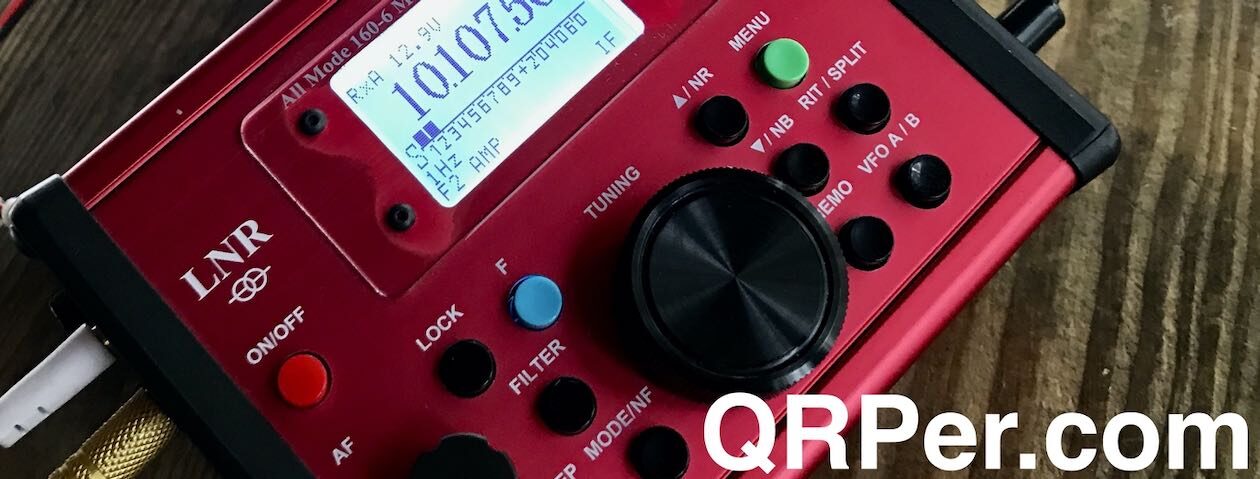by Vince (VE6LK)
As always there are lots of links within the article. Click one! Click them all! Learn all the things! ?
Dear readers, Hamvention 2025 was a wonderful getaway for me, and I met so many people in 3-D that I’d only ever worked with over teleconferencing. It was super great to see members of the Ham Radio Workbench Podcast crew (and friends of…) and get to hang with them for several days. Naturally, this included QRPer.com host Thomas K4SWL.
I was the last of the group to leave the Dayton area on May 20th and I began my drive back to the Indianapolis airport for the first of two flights home. And, naturally, this means a POTA stop along the way, and it would be my first in Indiana. While I had grand plans to visit WV and KY along the way, those plans fell by the wayside for a simpler and direct route from Dayton to Indianapolis.
When I travel like this, I look for parks that appear to be radio quiet and are not too far off the path of travel. Fort Harrison State Park was my chosen destination. And it did not disappoint in any way at all. Located in the NW corner of the Greater Indianapolis area, it is 1,700 acres of recreation nestled in a small quiet valley just away from the hustle and bustle of everyday life. Homes outside the park entrance seem to be from an era of yesteryear. I wished I would have had more time to explore!
Arriving at the park and one of the many picnic areas, I chose to be beside the lake. It was raining quite hard until up when I arrived and then let up to an intermittent drizzle. Fortunately there was a picnic shelter and a washroom building within eyesight. Accordingly I set up in the shelter with my KX3, Charmast battery and VK3IL pressure paddle.
I put out my Gigaparts Explorer 20 mast and new-to-me Packtenna 20m EFHW along with my fishing rod holder ground spike, hit tune on the KX3 and got to work.
The contacts didn’t come fast and furious, as the past week or so the SSN, SFI, A and K indicies weren’t really in my favour. Many times I would answer a station and they’d simply disappear. It took 30 minutes on air to complete the activation. This was a stark improvement from the day prior where it took well over an hour.

The Reverse Beacon Network told me my 10W signal was being heard all over the USA and some in Alberta Canada also, despite it putting my outgoing dot (see image above) on Montana where my USA callsign is based.

Still, after the extreme hustle and bustle of the days prior, this was super relaxing and just the break I needed before dealing with airports, rental cars and plenty of other travellers.
Having spent so much time around K4SWL, I channelled his video style and did an end to end on the activation without any edits – you can see that video on YT.
Click here to view on YouTube.
List of gear used for these activations:
- Elecraft KX3
- Charmast 100W battery
- VK3IL Paddle key
- Seadream headphone cable for the keys
- 35′ RG-174 feedline
- Chameleon wire winders
- 2-part Fishing rod holder
- Tufteln inline choke
Summary
Sometimes it’s just great to find a place to hang out in the peace and quiet, and this park was perfect and just what I needed after many days of constantly running.
72 and dit dit,
…Vince
First introduced to the magic of radio by a family member in 1969, Vince has been active in the hobby since 2002. He is an Accredited examiner in Canada and the USA, operates on almost all of the modes, and is continually working on making his CW proficiency suck less. He participates in public service events around Western Canada and is active on the air while glamping, mobile, at home or doing a POTA activation. You can hear him on the Ham Radio Workbench podcast, follow him on Twitter @VE6LK, check out his YouTube channel, and view the projects and articles on his website.








































